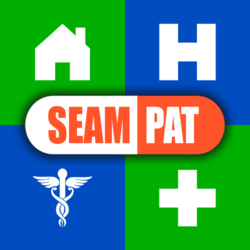
SEAMPAT aims to improve the continuity of medication between home and hospital by developing a medication reconciliation platform promoting active patient involvement.
Domaine
Factsheet
Project team
The transition between healthcare environments, especially between home and hospital, is a critical period, notably regarding the continuity of medication. Potentially harmful discordances can appear between the treatments followed at the patient’s home and the prescriptions established at the hospital.
The goal of the SEAMPAT project is to define an electronic process to manage medication reconciliation, with the active participation of the patient. This reconciliation aims to ensure that no medication was added, omitted or modified by inadvertence during the transition between healthcare environments.
CETIC is in charge of specifying, conceiving and developing the prototype of the SEAMPAT platform, which will consist of:
The platform will be evaluated with different groups of patients of CHU UCL Mont-Godinne and CHU Charleroi.
SEAMPAT will benefit to enterprises developing medical software for hospitals or private practice (functional improvement of the medication prescription modules) or telemonitoring solutions for patients.
As regards hospitals, the results will help to improve the quality of healthcare and reduce dramatic consequences of treatment discontinuity. They will also help to make processes more efficient and to improve the communication between patients and practitioners.
More generally, all Walloon patients, and in particular elder and/or polymedicated chronic patients, will benefit from the correct management of their treatment, without unnecessary modifications. Healthcare practitioners and organisms will also be able to save time and money regarding the management and follow-up of the patients (records).
Agenda
01.06.2017

01.06.2017
External activities
The Agoria e-Health Awards reward the best ICT projects in the health care sector, carried out within public institutions, healthcare institutions,...
En savoir plus
13.07.2016

13.07.2016
CETIC talks
15th International Conference on Computers Helping People with Special Needs
En savoir plus
Publications
19.03.2019

19.03.2019
Publications scientifiques
En savoir plus
01.11.2018

01.11.2018
Publications scientifiques
En savoir plus
13.07.2016

13.07.2016
Publications scientifiques
Valery Ramon, Ravi Ramdoyal, Sophie Marien, Arnaud Michot, Jimmy Nsenga, Gustavo Ospina, Fabian Steels, Quentin Boucher, Delphine Legrand,...
En savoir plus